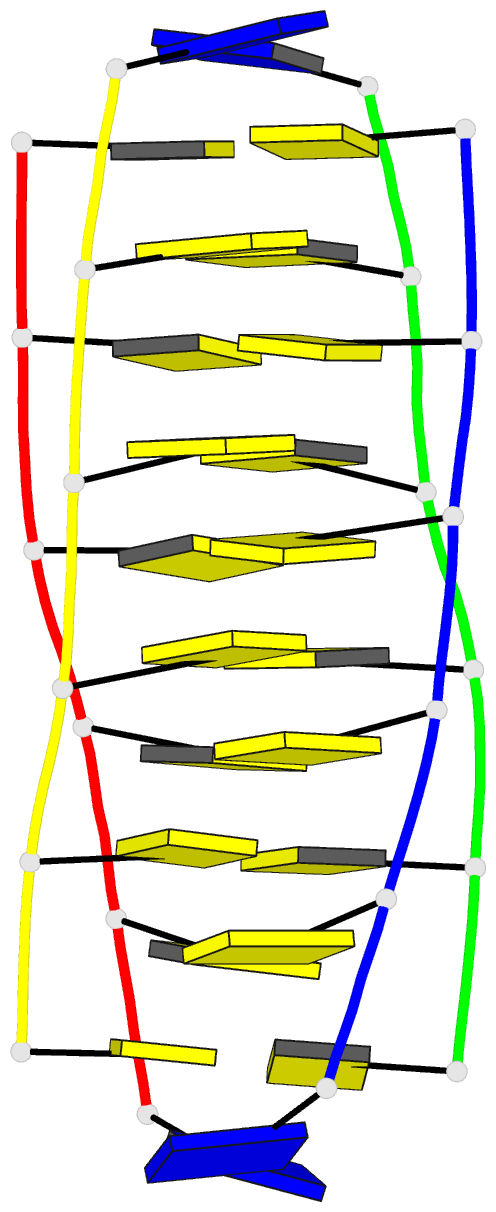Summary information and primary citation
- PDB-id
- 2n89; DSSR-derived features in text and JSON formats
- Class
- DNA
- Method
- NMR
- Summary
- Tetrameric i-motif structure of dt-dc-dc-cfl-cfl-dc at acidic ph
- Reference
- Assi HA, Harkness RW, Martin-Pintado N, Wilds CJ, Campos-Olivas R, Mittermaier AK, Gonzalez C, Damha MJ (2016): "Stabilization of i-motif structures by 2'-beta-fluorination of DNA." Nucleic Acids Res., 44, 4998-5009. doi: 10.1093/nar/gkw402.
- Abstract
- i-Motifs are four-stranded DNA structures consisting of two parallel DNA duplexes held together by hemi-protonated and intercalated cytosine base pairs (C:CH(+)). They have attracted considerable research interest for their potential role in gene regulation and their use as pH responsive switches and building blocks in macromolecular assemblies. At neutral and basic pH values, the cytosine bases deprotonate and the structure unfolds into single strands. To avoid this limitation and expand the range of environmental conditions supporting i-motif folding, we replaced the sugar in DNA by 2-deoxy-2-fluoroarabinose. We demonstrate that such a modification significantly stabilizes i-motif formation over a wide pH range, including pH 7. Nuclear magnetic resonance experiments reveal that 2-deoxy-2-fluoroarabinose adopts a C2'-endo conformation, instead of the C3'-endo conformation usually found in unmodified i-motifs. Nevertheless, this substitution does not alter the overall i-motif structure. This conformational change, together with the changes in charge distribution in the sugar caused by the electronegative fluorine atoms, leads to a number of favorable sequential and inter-strand electrostatic interactions. The availability of folded i-motifs at neutral pH will aid investigations into the biological function of i-motifs in vitro, and will expand i-motif applications in nanotechnology.





